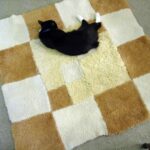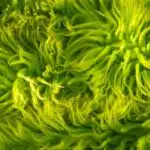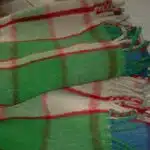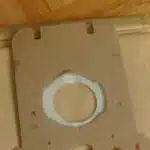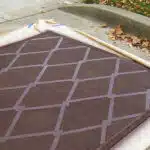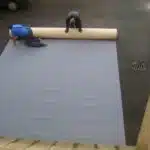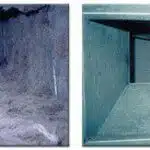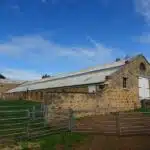Wool rugs are often considered to be a luxurious addition to a home. The softness and warmth that they provide can make any room feel cozy and inviting. However, cleaning wool rugs can be a challenge as they require special care to avoid damaging the fibers. While professional rug cleaning services are available, it is also possible to clean your wool rug with household items.
As a professional rug cleaning expert, I understand the importance of maintaining the quality of your wool rug while keeping it clean. Cleaning a wool rug with household items can be an effective and affordable solution when done correctly. In this article, I will share my knowledge on how to safely and effectively clean your wool rug using common household items. By following these tips, you can save money on professional cleaning services and enjoy a clean and beautiful wool rug in your home for years to come.
Understanding The Nature Of Wool Rugs
Wool rugs are a popular home decor item due to their luxurious look and feel. Wool is a natural fiber that is known for its durability, softness, and resistance to stains. Understanding wool fibers is important in properly caring for wool rugs.
Wool fibers come from the fleece of sheep or lambs. These fibers are able to absorb moisture without feeling damp, which makes them ideal for use in rugs. Additionally, wool has a natural crimp that allows it to retain its shape and resist matting. However, wool can also be damaged by harsh chemicals or excessive heat.
Proper care for wool rugs involves regular cleaning and maintenance. Vacuuming is an essential step in keeping your rug clean as it removes dirt and debris that can accumulate over time. It’s important to avoid using a beater bar on the vacuum as it can damage the delicate fibers of the rug. In addition to regular vacuuming, spot cleaning should be done immediately when spills occur to prevent staining.
Identifying the type of stain or dirt on your wool rug is crucial in determining the best method for cleaning it. By understanding the nature of your rug’s fibers and taking proper care of it, you can ensure that your wool rug stays beautiful for years to come.
Identifying The Type Of Stain Or Dirt
After understanding the nature of wool rugs, it is important to identify the type of stain or dirt present on the rug. This will help in determining the appropriate cleaning solution and technique to use. The first step in identifying the type of stain or dirt is to determine its source.
Stains can come from different sources such as food spills, pet urine, ink stains or mud. It is important to identify the source of the stain before attempting any cleaning method. For example, if the stain is from pet urine, a different approach is needed compared to a food spill stain. Once you have determined the source of the stain, you can then move on to finding effective treatments for removing it.
Effective treatments for removing stains vary depending on their sources. Some common household items that can be used include vinegar, baking soda and hydrogen peroxide. However, it is important to note that wool rugs are delicate and require gentle handling when cleaning. Harsh chemicals or scrubbing vigorously may cause damage to the fibers of the rug.
In order to prevent damage while cleaning your wool rug and ensure effective removal of stains, it is recommended to start with vacuuming and removing loose dirt. This step helps in preparing the rug for deeper cleaning by getting rid of loose dirt particles that may be embedded within its fibers. By eliminating these particles beforehand, you reduce chances of rubbing them further into your rug during cleaning which could result in permanent staining or damage.
Vacuuming And Removing Loose Dirt
Vacuuming is an effective way to remove dirt and dust from a wool rug. It should be done regularly to keep the rug clean and extend its lifespan.
Loose dirt can be removed from the rug by using a handheld vacuum or a brush attachment. This should be done before vacuuming to ensure that all dirt is removed.
If the rug is heavily soiled, a household cleaning solution can be used to gently spot clean the rug. It is important to read the care label to ensure that the cleaning solution is safe for the rug.
After cleaning, the rug should be allowed to air-dry completely before vacuuming again. This will help to prevent any dirt or dust from becoming trapped in the fibers of the rug.
Vacuuming
As a professional rug cleaning expert, I understand the importance of vacuuming your wool rug regularly to maintain its longevity and appearance. Using a wool rug pad under your rug can help prevent dirt and debris from penetrating deep into the fibers, making it easier to vacuum. It is recommended to vacuum at least once a week or more frequently if the rug is in a high traffic area.
When vacuuming your wool rug, it’s important to use the right settings and tools to avoid damaging the fibers. The suction power should be adjusted to low or medium, as too much suction can pull out fibers and cause damage. It’s also recommended to use an upholstery attachment with soft bristles to gently loosen any dirt or debris that may be trapped in between the fibers.
To ensure that you’re maintaining your wool rug fibers properly, it’s important to pay attention to any areas that may require extra attention when vacuuming. High traffic areas such as entryways or hallways may need more frequent vacuuming than other areas of the rug. Additionally, if you have pets or children who frequently play on the rug, you may need to increase your frequency of vacuuming. By following these tips and regularly vacuuming your wool rug with care, you’ll be able to enjoy its beauty for years to come.
Using a wool rug pad and maintaining regular vacuuming habits are key components of caring for your wool rug. With proper care, you can extend its life while keeping it looking beautiful and clean. Remember that prevention is always better than cure – so don’t wait until your rug becomes heavily soiled before taking action. By incorporating these tips into your cleaning routine, you’ll be able to keep your wool rugs in great condition for many years ahead.
Loose Dirt Removal
To maintain the appearance and longevity of a wool rug, regular vacuuming is essential. Proper vacuuming techniques are critical to ensure that dirt and debris do not penetrate deep into the fibers or cause any damage. Loose dirt is one of the most common types of debris that accumulates on a wool rug. Removing it properly is crucial to prevent it from becoming embedded in the fibers or causing any long-term damage.
Loose dirt can be removed from a wool rug using several different methods. The easiest way to remove loose dirt is by using a vacuum cleaner with an appropriate attachment. A professional cleaning service provider can help you determine which type of attachment will work best for your specific rug type. Using the right suction power and attachment will loosen and pick up all loose dirt, leaving your rug clean and looking great.
If your wool rug has significant amounts of loose dirt, it may require professional cleaning services to remove it fully. A professional cleaner can use specialized equipment to remove all the accumulated dirt without causing any damage to the fibers. This method ensures that all debris is removed from deep within the fibers, leaving your rug looking fresh and clean. Regular maintenance by a professional cleaner will also help extend your rug’s lifespan while keeping it in excellent condition for years to come.
Shaking Out The Rug
To effectively clean a wool rug with household items, it is important to know the proper techniques for shaking out the rug. This step is crucial in removing surface-level dirt and debris before proceeding with deeper cleaning methods. First, start by taking the rug outside and laying it flat on a clean, dry surface.
Next, use a vacuum cleaner to remove any loose dirt or debris that may be clinging onto the fibers. When vacuuming, use gentle suction and avoid using any high-powered settings that could potentially damage the wool fibers. It is also recommended to use a vacuum cleaner with a HEPA filter to prevent dust from circulating back into the air.
Another effective method for shaking out a wool rug is by beating it. To do this, hang the rug over a sturdy clothesline or railing outside and use a large stick or broom handle to beat the rug gently. Be sure to start at one end of the rug and work your way towards the other end in sections, being careful not to hit too hard as this can cause damage to the fibers.
By employing these vacuuming techniques and beating methods, you’ll be able to effectively shake out your wool rug and prepare it for deeper cleaning. In order to further remove stains and odors from your wool rug, you’ll need to create a homemade cleaning solution which we will discuss in detail in our next section.
Creating A Homemade Cleaning Solution
- When cleaning a wool rug with household items, it is important to gather the necessary supplies beforehand, such as a clean white cloth and a bucket of warm water.
- To make the cleaning solution, mix three tablespoons of white vinegar with two cups of warm water and stir thoroughly.
- Dip the cloth into the solution and wring it out until it is damp.
- Gently dab the area with the cloth and avoid rubbing, as this could damage the wool fibers.
Gathering Supplies
To properly clean a wool rug, it is important to have the right supplies on hand. While commercial cleaning products may work well, there are also alternative supplies that can be used to create an effective and eco-friendly cleaning solution. One such option is vinegar, which can be mixed with water in equal parts to create a gentle yet effective cleaner. Another alternative is baking soda, which can be sprinkled onto the rug and then vacuumed up after sitting for several minutes.
In addition to these alternative supplies, there are also eco-friendly options available for those who want to minimize their impact on the environment. For example, using plant-based soaps or detergents can be a great way to clean your rug without introducing harmful chemicals into your home. Additionally, using natural fibers like cotton or linen for cleaning cloths can help reduce waste and promote sustainability.
Before beginning the cleaning process, it is important to gather all of the necessary supplies so that you are prepared for any situation that may arise. By having a variety of alternative and eco-friendly options on hand, you can ensure that your wool rug is cleaned thoroughly and effectively while also minimizing your impact on the environment.
Making The Solution
As a professional rug cleaning expert, I strongly recommend using alternative cleaning solutions when creating a homemade cleaning solution for your wool rug. One of the essential steps in making the solution is mixing the ingredients correctly to achieve a potent blend that can clean your rug thoroughly without causing any damage. Using natural ingredients like vinegar, baking soda, and plant-based soaps can also help prevent any unwanted side effects.
When mixing the ingredients, it’s crucial to measure them correctly to avoid diluting or over-concentrating the solution. For example, if you’re using vinegar and water, mix equal parts of both ingredients to create a balanced solution that can clean your wool rug effectively. Adding essential oils like lavender or tea tree oil can also give your cleaning solution a pleasant scent while enhancing its cleaning power.
Alternative cleaning solutions are an excellent option for those who want to create an eco-friendly and sustainable homemade cleaner for their wool rugs. Not only are these solutions safe for the environment, but they’re also gentle on your rug’s fibers, ensuring that it stays in good condition for longer. By incorporating natural ingredients and avoiding harsh chemicals commonly found in commercial cleaners, you’ll have peace of mind knowing that you’re doing your part in protecting both your family’s health and the environment.
In summary, creating a homemade cleaning solution for your wool rug requires careful consideration when selecting alternative supplies like vinegar, baking soda and plant-based soaps. Mixing these ingredients adequately ensures that you get effective results without damaging your rug’s fibers or introducing harmful chemicals into your home. Making eco-friendly choices not only benefits our planet but also helps preserve our health and well-being.
Testing The Solution On A Small Area
After creating a homemade cleaning solution, the next step is to test its accuracy and measure its effectiveness. This is an important step to ensure that the solution will not cause any damage or discoloration to the wool rug. To do this, you need to apply a small amount of the cleaning solution onto a small area of the rug and observe it for any adverse reactions.
To test the accuracy of your cleaning solution, you need to check if it can effectively remove dirt, dust, and other stains from the wool rug. The best way to do this is by applying a small amount of the solution onto a hidden corner of the rug and gently rubbing it with a clean cloth. Let it sit for 10-15 minutes before rinsing it off with warm water. Observe if there are any changes in color or texture after rinsing. If there are no adverse reactions, you can proceed with using the cleaning solution on other parts of the rug.
Measuring effectiveness is also crucial in determining if your homemade cleaning solution works well on wool rugs. To do this, apply a small amount of the cleaning solution onto a stained area of the rug and gently rub it in with a clean cloth. Let it sit for about 30 minutes before rinsing it off with warm water. Observe how much dirt or stain was removed from the rug after rinsing. If there is still visible dirt or stain left on the rug, then you may need to adjust your cleaning solution’s formula.
The next section will cover how to apply your tested and effective homemade cleaning solution onto your wool rug properly without causing any damage or discoloration.
| Cleaning Solution Ingredients | Wool Rug Cleaning Effectiveness |
|---|---|
| Vinegar | Great |
| Baking Soda | Good |
| Lemon | Fair |
| Salt | Poor |
Applying The Solution To The Rug
- Spray the solution onto the rug in an even and uniform manner, making sure to cover the entire rug evenly.
- Allow the solution to sit on the rug for 15-20 minutes to penetrate and break down dirt and other debris.
- Rub the rug gently with a clean, damp cloth to work the solution into the rug fibers.
- Use a vacuum cleaner to remove any remaining dirt or debris from the rug fibers.
Spray The Solution
One of the most effective ways to clean a wool rug is by using DIY cleaning solutions. These are not only cost-effective but also eco-friendly options that can help preserve the quality of your rug. Once you have mixed your solution, it is essential to apply it correctly to ensure maximum effectiveness.
Spraying the solution on your wool rug is an effective way to ensure that it reaches every fiber without damaging them. To do this, you will need a spray bottle with a nozzle that allows for easy and even distribution of the solution. Before spraying, ensure that you test a small area first to avoid discoloration or damage.
When spraying, make sure that you apply enough solution to cover the entire surface of the rug evenly. Avoid over-saturating as this may cause mold growth or damage to the fibers. After applying the solution, give it time to penetrate deep into the fibers before rinsing thoroughly with water.
In summary, DIY cleaning solutions are an excellent option for cleaning wool rugs while preserving their quality and reducing environmental impact. Spraying these solutions onto your rug is an effective way to ensure even coverage and avoid over-saturation which may cause damage or discoloration. Remember always to test a small area before spraying and allow sufficient time for the solution to penetrate before rinsing thoroughly with water.
Rubbing The Rug
After applying the solution to your wool rug, another effective way to ensure that it is thoroughly cleaned is by rubbing it. Rubbing helps to loosen dirt and debris that may have embedded deep within the fibers of the rug. However, it is important to do this correctly to avoid damaging or discoloring your rug.
One benefit of rubbing your wool rug is that it allows you to target specific areas with stubborn stains or dirt buildup. By focusing on these areas, you increase the effectiveness of the cleaning process and ensure that your rug looks as good as new. However, if you are hesitant about rubbing your rug, there are alternatives such as using a soft-bristled brush or a microfiber cloth.
When rubbing your wool rug, ensure that you use gentle circular motions with light pressure. Avoid scrubbing too hard as this could damage the fibers of the rug. Additionally, take care when cleaning delicate areas such as fringes or tassels. Rubbing can be an effective way to clean your wool rug while targeting specific problem areas but it should be done gently and with caution.
In summary, rubbing your wool rug can be an effective way to clean it thoroughly while targeting specific areas with stubborn stains or dirt buildup. Alternatives such as using a soft-bristled brush or microfiber cloth are available for those who prefer not to rub their rugs. When rubbing, remember to use gentle circular motions and avoid scrubbing too hard which could damage the fibers of the rug.
Scrubbing The Rug With A Soft Brush
Have you ever wondered how to clean your wool rug without causing any damage? Scrubbing the rug with a soft brush is an excellent technique to remove dirt and stains without using harsh chemicals. By following these simple steps, you can keep your wool rug looking new for years to come.
Soft brush techniques are essential when it comes to cleaning wool rugs. Using a hard-bristled brush can damage the fibers of the rug, making it look worn out and old. Instead, use a soft-bristled brush to gently scrub the area you want to clean. Begin by working in small sections, starting from the outside and moving towards the center of the stain.
Avoiding harsh chemicals is also important when cleaning a wool rug. Many household cleaning products contain chemicals that can damage or discolor wool fibers. Instead, opt for natural cleaners such as vinegar and baking soda. These products are gentle on the fibers of the rug and will not cause any damage.
To make scrubbing more enjoyable, here are some tips:
- Play some music or listen to an audiobook while cleaning.
- Take short breaks in between sections to avoid fatigue.
- Enlist a friend or family member to help you if you have a large rug.
- Reward yourself with a treat after completing each section.
Now that you know how to scrub your wool rug with a soft brush while avoiding harsh chemicals, it’s time to move on to rinsing the rug with cold water.
Rinsing The Rug With Cold Water
- When cleaning a wool rug, it is important to mix cold water with a mild detergent, such as a wool-safe detergent or shampoo.
- The correct ratio of water and detergent should be followed to ensure that the rug is cleaned safely and effectively.
- After mixing the water and detergent, use a cloth or sponge to slowly rinse the rug from the back side in a small area, working from the outer edges inwards.
- Use clean cold water to rinse the rug until all the soap residue is removed and the rug is completely clean.
Mixing The Water
As a professional rug cleaning expert, I understand the importance of mixing the water properly when rinsing a wool rug. This step is crucial in ensuring that the fibers are thoroughly cleaned without causing damage or shrinkage. The key to successful mixing is to use proper techniques and pay close attention to the water temperature.
Firstly, it’s important to use a large container that can accommodate the size of your rug. Fill it with enough cold water to cover the surface of the rug entirely. Next, add a small amount of mild detergent or vinegar to help loosen dirt and stains. It’s essential not to overdo it on these cleaning agents as they may cause discoloration or damage to your wool rug.
When mixing, avoid using hot or warm water as this may cause shrinkage in your wool rug. Instead, use only cold water throughout the entire rinsing process. Use your hands or a soft-bristled brush to gently agitate the fibers, helping remove any remaining dirt and soap residue.
By following these simple mixing techniques and paying attention to water temperature, you’ll be able to effectively rinse your wool rug without causing any harm. Remember always; do not use hot water, and avoid harsh chemicals at all costs since they can deteriorate its quality over time.
Rinsing The Rug
Proper rug cleaning is crucial in maintaining the quality and longevity of your wool rug. One crucial step in the process is rinsing. Rinsing a rug involves removing any remaining soap residue and dirt from the fibers after washing. It’s essential to rinse your rug correctly to ensure that it remains clean without causing any damage or shrinkage.
When rinsing your rug, it’s essential to use cold water throughout the entire process. Hot or warm water can cause shrinkage, while cold water helps preserve the integrity of the fibers. Additionally, using cold water helps remove any remaining soap residue and dirt effectively.
After rinsing, it’s important to dry your rug properly. Improper drying techniques can lead to mold growth, fiber damage, and discoloration. The best way to dry your wool rug is by laying it flat on a clean surface in a well-ventilated area away from direct sunlight. You should never place it in a dryer or wring out excess water as this can cause damage to the fibers.
In conclusion, proper rinsing techniques are crucial in maintaining the quality of your wool rug. Always rinse with cold water and avoid harsh chemicals that can deteriorate its quality over time. Remember also; proper drying techniques are equally important for preserving its integrity and longevity.
Removing Excess Water
After rinsing the wool rug with cold water, it is important to remove the excess water from it. Using towels is a great way to get rid of excess water quickly. Start by placing a clean towel on the surface of the rug and press down gently. This will help absorb most of the water from the rug.
Once you have removed as much water as possible with towels, it’s time to air dry the wool rug. Air drying techniques work well for wool rugs because they allow air to circulate around the fibers and prevent them from becoming too damp. One effective technique is hanging your rug over a clothesline or railing in direct sunlight. Be sure to flip your rug occasionally so that both sides receive adequate exposure to sunlight.
Professional drying services are recommended if you don’t have enough space or time for air drying at home. Professional cleaners use specialized equipment such as high-powered fans and dehumidifiers that can speed up the drying process significantly. However, these services can be costly and may not be necessary if you have access to outdoor space for air drying. With proper care, your wool rug should be ready for use once it’s completely dry.
To ensure your wool rug dries evenly without any wrinkles or bumps, it’s best to dry it flat on a clean surface. Place a clean towel underneath your rug and lay it out flat on top of another towel or any other smooth surface that doesn’t cause any damage to its fibers. If you notice any folds or wrinkles while drying, gently stretch out those areas until they’re smooth again. By following these steps carefully, you’ll be able to restore your wool rug’s beauty and extend its lifespan significantly!
Drying The Rug Flat
- Excess moisture can be removed from a wool rug by blotting it with a clean, dry towel.
- Air drying outside is an option if the weather is dry and warm.
- If air drying outside is not an option, indoor drying is best achieved by using fans to blow air across the rug.
- Care should be taken to ensure the rug is supported on all sides to minimize distortion.
- It is also important to ensure the fans are not too close to the rug, as this can cause damage.
- As wool is a natural material, it is important to monitor the drying process to ensure it is done safely, without causing any damage or shrinkage.
Removing Excess Moisture
When it comes to cleaning a wool rug, one of the most crucial steps is drying it properly. However, before you can start air drying the rug flat, you need to remove excess moisture from it. This step is essential to prevent mold and mildew growth, which can damage the rug’s fibers and cause unpleasant odors in your home.
To remove excess moisture from a wool rug, you can start by using towels. Lay the towels on top of the rug and press down gently to absorb as much water as possible. You may need to repeat this process several times until the towels come away relatively dry. Be sure not to rub or scrub the rug too hard with the towels, as this can damage its delicate fibers.
Once you’ve removed most of the moisture with towels, it’s time to air dry the rug flat. Find a clean and dry area on a flat surface, such as a garage floor or patio deck. Lay the rug out evenly on top of some clean towels or sheets so that it retains its shape while drying. Leave enough space between each edge of the rug and any walls or furniture to ensure proper airflow around it. Allow the rug to air dry completely before walking on it or returning it to its usual location.
By following these steps for removing excess moisture during your wool rug cleaning process, you’ll be able to ensure that your investment lasts longer and remains in excellent condition for years to come. Remember always to handle your wool rugs delicately when cleaning them so that they retain their natural beauty and softness without damage.
Air Drying Outside
After removing excess moisture from a wool rug, air drying it flat is the next essential step in its cleaning process. While indoor air drying is an option, there are benefits to air drying outside, especially on a sunny day. First, the sun’s natural UV rays can help disinfect and deodorize the rug while also providing natural heat for faster drying times. Additionally, outdoor air circulation can be more efficient than indoor circulation, which helps prevent mold and mildew growth.
When considering air drying outside, there are a few tips to keep in mind. First, choose a clean and dry area away from direct sunlight that has good airflow. Avoid placing the rug on grass or damp surfaces as this can slow down the drying process and potentially damage the rug’s fibers. Secondly, make sure to flip the rug periodically during the drying process to ensure even exposure to sunlight and proper airflow. Lastly, monitor weather conditions and avoid air-drying on rainy or humid days.
Overall, choosing to air dry your wool rug outside can be an effective way to remove excess moisture quickly while also preventing mold and mildew growth. By following these tips for outdoor air drying, you can help ensure that your wool rug remains in excellent condition for years to come while maintaining its natural beauty and softness without damage.
Using Fans
Using fans is another option for drying a wool rug flat. While air drying outside can be effective, using fans can help speed up the process even further. Fans provide constant airflow and circulation, which can help remove excess moisture from the rug’s fibers. Additionally, using fans indoors can be more convenient and practical as it eliminates the need to monitor weather conditions.
One of the benefits of using fans is that it can significantly reduce drying time. However, there are also some drawbacks to consider. First, using fans indoors may not provide the same level of disinfecting and deodorizing benefits as outdoor air drying with natural sunlight. Additionally, if the fan is too powerful or placed too close to the rug, it can potentially damage the fibers or cause them to become misshapen.
When using fans to dry a wool rug flat, it is important to choose an appropriate fan size and speed setting. A medium-sized fan on a low or medium setting should suffice for most rugs. It is also recommended to periodically flip the rug during the drying process to ensure even exposure to airflow. Overall, while there are some potential drawbacks to using fans for drying a wool rug flat, it can still be an effective method when used correctly and with caution.
Grooming The Rug
After cleaning a wool rug, it’s important to groom it properly to maintain its appearance and quality. Grooming involves using brushing techniques and grooming tools to remove any remaining dirt or debris from the rug’s fibers. This step not only enhances the rug’s look but also prolongs its lifespan.
Brushing techniques vary depending on the type of wool rug and its condition. For example, if the rug is new, a soft-bristled brush can be used to gently loosen any fibers that have been flattened during shipping. If the rug has been in use for some time, a stiff-bristled brush may be necessary to remove deeply ingrained dirt or pet hair. It’s important not to apply too much pressure when brushing so as not to damage the fibers.
Grooming tools play an essential role in maintaining the quality of wool rugs. Apart from brushes, other grooming tools include vacuum cleaners with adjustable suction settings, lint rollers, and carpet sweepers. These tools are designed to remove dirt and debris without damaging the delicate fibers of wool rugs. By investing in high-quality grooming tools, you can ensure that your wool rug remains in good condition for years to come.
To prevent future stains and dirt buildup on your wool rug, it’s important to take certain preventative measures. These include placing doormats at entrances, removing shoes before entering rooms with rugs, and vacuuming regularly. By taking these simple steps, you can keep your wool rug looking clean and fresh while minimizing wear and tear over time.
Preventing Future Stains And Dirt
Pre-treating stains is an important step in preventing future damage to wool rugs. It is recommended to use a specialized cleaner for wool rugs that is pH neutral and non-toxic. This will ensure that the rug fibers are not damaged during the cleaning process. Before applying the cleaner, it is important to test it on a small, inconspicuous area of the rug to ensure that there are no adverse reactions.
In addition to pre-treating stains, long-term maintenance is crucial for keeping wool rugs clean and looking their best. Regular vacuuming can help remove dirt and debris before it becomes ground into the fibers of the rug. It is also important to rotate the rug every six months to prevent uneven wear and tear. For spills or stains, it is important to blot them immediately with a clean towel or cloth. Rubbing can cause the stain to spread and make it more difficult to remove.
While regular maintenance can go a long way in keeping wool rugs clean, there may come a time when professional cleaning services are necessary. If stains or odors persist despite pre-treatment and regular maintenance, it may be time to seek out a professional cleaning service. Professional cleaners have access to specialized equipment and solutions that can effectively remove even stubborn stains without damaging the rug fibers. Ultimately, investing in regular maintenance and knowing when to seek professional cleaning services will help keep your wool rug looking its best for years to come.
When To Seek Professional Cleaning Services
To maintain the pristine condition of your wool rug, it is important to prioritize preventive measures. Regular vacuuming, spot cleaning, and prompt removal of any spills or stains can go a long way in prolonging the lifespan of your rug. However, even with consistent care, dirt and allergens can still accumulate deep within the fibers over time.
This is where professional cleaning services come in. Not only do they have specialized equipment and cleaning solutions that are more effective in removing dirt and stains, but they also have the expertise to handle different types of rugs without causing damage. Additionally, professional cleaning can help eliminate odors and allergens that may be trapped within the rug fibers.
While DIY methods may seem cost-effective at first glance, it is important to consider the long-term benefits of professional cleaning. Improper cleaning techniques or products can cause irreversible damage to your rug, leading to costly repairs or replacement. Professional services may come with a higher upfront cost, but their thorough and safe approach can ultimately save you money in the long run by extending the life of your rug.
By investing in professional cleaning services for your wool rug, you can rest assured that it will be cleaned thoroughly and safely. Not only does this help maintain its appearance and quality over time, but it also contributes to a healthier living environment by eliminating allergens and odors. With a freshly cleaned rug at home, you can fully enjoy its warmth and comfort without any worry or hassle.
Enjoying Your Clean Wool Rug At Home
As a professional rug cleaning expert, I must stress the benefits of wool rugs. Not only are they stylish and durable, but also hypoallergenic and eco-friendly. Wool rugs have natural insulating properties that help regulate room temperature by keeping it cool in the summer and warm in the winter. Plus, wool fibers have a natural resistance to fire, making them safer for your home.
However, maintaining wool rug texture is crucial to ensuring its longevity. After cleaning your wool rug with household items, take care not to over-wet it during drying or expose it to direct sunlight as this can cause shrinkage or discoloration. Instead, aim to dry it naturally in a well-ventilated area with good air circulation. You may also opt to use a fan or dehumidifier to speed up the process.
Enjoying your clean wool rug at home is all about taking proper care of it. Regular vacuuming and spot cleaning can do wonders for keeping your rug looking fresh and new. Additionally, placing furniture pads under heavy pieces will help prevent crushing of the fibers over time. By following these tips on maintaining wool rug texture, you’ll be able to enjoy the many benefits of owning a beautiful and long-lasting wool rug for years to come.
Conclusion
Wool rugs are a valuable addition to any household, and as such, require proper care and maintenance to ensure their longevity. Understanding the nature of wool rugs is crucial in determining the best way to clean them. Identifying the type of stain or dirt on the rug is also essential in choosing the appropriate cleaning method.
Vacuuming and shaking out loose dirt from the rug before washing it with a homemade cleaning solution can help prevent further damage. Grooming the rug after cleaning helps maintain its texture and appearance. Preventing future stains and dirt by placing mats at entrances or avoiding eating near the rug can also extend its lifespan. If unsure how to proceed, seeking professional cleaning services may be necessary.
In conclusion, caring for a wool rug requires attention to detail and a gentle approach. Like tending to delicate flowers in a garden, taking time to understand their needs will yield beautiful results. By following these steps, you too can enjoy a clean wool rug that adds warmth and comfort to your home for years to come.
Image Credits


